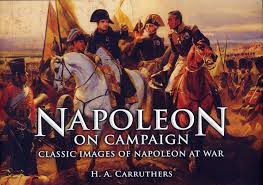When he strode down the gangplank of HMS Hecla at Balaclava on 8th March 1854, Roger Fenton was in the vanguard of an arts movement that would change pretty well all our perceptions of the world outside our windows. Photography is the pre-eminent art form of our age. Whether it is that selfie you took on your phone today or the slightly yellowing portrait of granny and granddad on your mantle, the world of photography has swallowed us up whole and not all of us realise it.
Fenton went to the Crimea to photograph the war and in a few months he made over three hundred images which were literally snapped up by British society at a time when an unpopular and flawed campaign was costing lives, money and prestige denting the visage of Pax Britannica. Fenton’s photos were used to present a more positive image of the campaign to a doubtful public. Photography had become propaganda.
At the time Fenton was finding fame other artists were sticking resolutely to the medium he had abandoned. Painting was in no danger of being eclipsed by its new chemically inflated cousin. The great artists were all hard at it, finding ways to reach audiences, make money and just do the things they loved.
The Victorian propagandists making currency of photographs had not found a new game. Paintings have always had more to them than just being simple art or pretty pictures. They send messages, projecting visions of power and prestige. They excite the emotions of nostalgia, nationalism and other more colourful passions.
In this excellent book by Harriet Carruthers we see a collection of magnificent paintings depicting the Napoleonic era from the rise of the great man until his tragic demise. Napoleon Bonaparte always used to top the polls of the greatest strategists or military geniuses of ‘all time’ and although deeper analysis shows many of his schemes were cynical and often deeply flawed, he remains one of the few figures of history just about everybody should have heard of.
At the time many of the works appearing in this book were created, the era of Napoleon was still fresh in the minds of the men remaking a Europe where constant disputes and warring had hardly diminished and we know there was much, much worse to come. This collection shows us all the aspects of the things going on in the minds of the artists and their patrons behind the pallet. In effect these works are performing exactly the same function as all the classic photographs you may keep in mind, but they also fill the role we would recognise in posters or even in newsreels. They tell us about the grandeur and folly of Napoleon and the determination of others to destroy him. They show a nostalgia for his time in the hearts of men yearning for those days to return and in equal measure they depict the pride or relief in those who stopped him.
Perhaps the most interesting thing you can do is go beyond the wonderful paintings themselves and run a quick scan of the internet on the individual artists. The most telling thing to note is the dates they were at work. Not all of these paintings were produced in Napoleon’s lifetime and it is the case that even as Roger Fenton was breaking a mould out in the miserable Crimea to record the here and now, others were busy looking back to the glories of the rise and fall of the Corsican artilleryman. To my mind it makes it much more interesting to consider these things while you look at the beautiful art.
This is a really fine book and I don’t have any problems recommending it as a tool in learning about the era of the Napoleonic Wars. My colleague Phil Hodges referred to a painting of the Zulu War that has exercised his mind since childhood and there are several here that many of us will know and others we will find astonishing and immensely imposing. These were not small canvasses and to see them in real life has got to be done if we can.
The artists were a mixed bunch of people, revolutionaries, opportunists, soldiers and dreamers. The compilation of the fruit of their motivation in this single volume is immensely rewarding. I feel enriched by it.
The images are accompanied by economically written captions explaining events, arranging each time and place into perspective, but there is little or nothing on the artists; so you will need your scroll pad or mouse to explore this aspect. As said, I found it very worthwhile.
This book is as important as any of the magnificent photo albums I have seen this year reliving the Great War, Vietnam and other horrors. It tells a story in the manner of the times Roger Fenton and his chums were either complimenting or undermining, depending on your appreciation of art.
I do love painting and used to dabble but although photography is my true love I am always happy to do a bit of flirting now and again. This book will remind you there is so much more to recording visual history than a click of a button. War might never have looked so colourful or magnificent. Which presents another lesson altogether!
Reviewed by Mark Barnes for War History Online.
NAPOLEON ON CAMPAIGN
Classic Images of Napoleon At War
By HA Carruthers
Pen & Sword Military
ISBN: 978 1 78346 250 6
